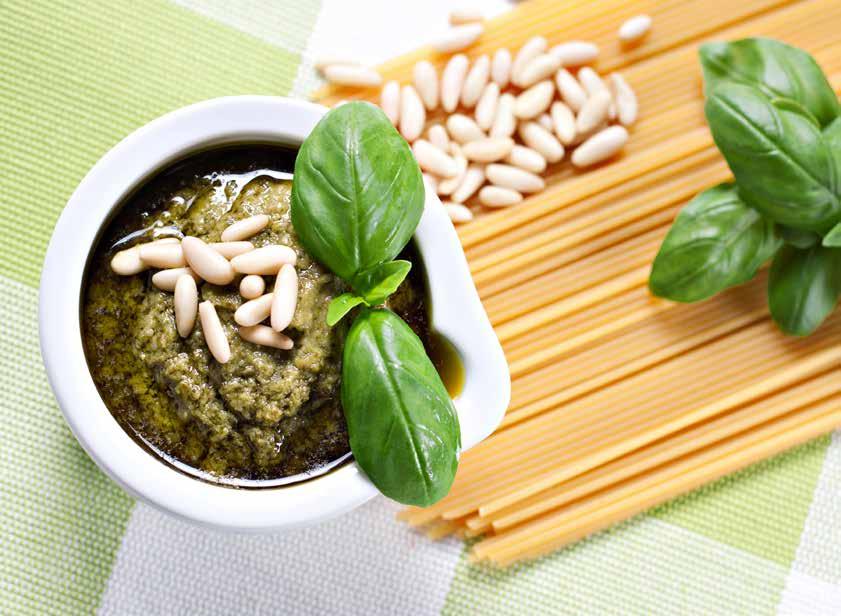
4 minute read
WELLNESS
BENEFITS OF DEEP BREATHING INCLUDE:
AD By Patricia Danflous It’s spring. Enjoy life. Stop and smell the roses – or just take time to use your nose, mouth and lungs for cleansing and wellness. Deep breathing is known to lower blood pressure and release stress, along with numerous other healthy benefits.
Advertisement
Clinical hypnotherapist Bonnie Miller explains that deep breathing cleans blood as it removes carbon dioxide from the body and increases oxygen levels. “Remember that saying ‘out with the old, in with the new?’ As we breathe out the old air and take in new, fresh oxygen, we are regenerating our bodies, contributing to a better state of physical and mental well-being,” she says. THE TECHNIQUE
The emphasis is on breathing deeply into the abdomen, not just the chest. Respiratory experts advise that deep breathing should be slow, deep and in through the nose, not the mouth.
Breathe in slowly; use your diaphragm to circulate oxygen throughout the lungs. Next, exhale slowly, pushing air out of your lungs. Exhaling should last twice as long as inhaling. Some find that breathing out with pursed lips works best, while others place their hands on their stomachs to feel the rise and fall of breathing in and out.
“Deep breathing is not something we can just start to do,” Miller emphasizes. “The technique takes some practice – try it several times a day when you are relaxed and have the time to focus.” DEEP BREATHING Energize Your Body with Releasing stress and anxiety Regulating weight Relieving pain Increasing energy Increasing cardiovascular activity Lowering blood pressure Improving posture Improving digestion Improving sleep patterns Air is free. Start deep breathing today.
AD
AD

By Tami Charbonnet
FRESH PESTO

INGREDIENTS: 2 cups fresh basil leaves 1 clove fresh garlic 1 / 4 cup pine nuts or almonds 1 / 8 cup cold pressed olive oil
DIRECTIONS: Blend all ingredients on high in a food processor until smooth. *Serve over fresh sliced tomatoes for a simple hors d’oeuvre, or spread inside a panini with tomatoes and spring veggies. *Divide pesto into small glass containers and freeze for future use.
Using fresh spring herbs rather than dried or processed seasonings is a simple way to add nutrient density to daily meals. Fresh herbs like cilantro, parsley, oregano, thyme, basil, chives and rosemary are abundant at local farmers markets in spring, and they are also easy to plant in a garden or outdoor pots and hanging planters. Consumption of fresh spring herbs has health benefits far beyond simply adding flavor to food. CILANTRO: Cilantro is packed with phytonutrients and antioxidants. It is a great source of dietary fiber, iron, magnesium and manganese. Cilantro is rich in antioxidants that are effective at fighting free radicals.
PARSLEY: Parsley is high in vitamins C and A, which are known to strengthen the body’s immune system. Vitamin C is necessary for collagen, the main structural protein found in connective tissue. This nutrient will also aid in the body’s ability to repair wounds and maintain healthy bones and teeth.
OREGANO AND THYME: Oregano and thyme are fiber dense. Fiber increases the bulk of stool and stimulates peristaltic motion, which moves food through the digestive tract efficiently. Eating fiber-rich plants allows the food you consume to detox the body.
BASIL: The George Mateljan Foundation found that basil is a great source of vitamin A because it is high in carotenoids such as beta-carotene, which protects against free radical damage in epithelial cells and prevents free radicals from oxidizing cholesterol.
CHIVES: The most essential nutrient in chives is folic acid, which is an important mineral, especially for pregnant women. It helps prevent neural tube defects in newborns. Additionally, chives have diuretic properties that stimulate urination, helping the body clear out toxic dietary substances.
ROSEMARY: The Brain, Performance and Nutrition Research Centre in the U.K. found that having higher blood levels of one of rosemary’s main chemical compounds is linked to better cognitive performance.

ARTICHOKE AND WHITE BEAN SALAD
20 INGREDIENTS l 2 15-ounce cans white beans, rinsed and drained l 1 14-ounce jar artichoke hearts (packed in water, not oil), drained and chopped l 1 celery stalk, finely diced l 1 red bell pepper, seeded and diced l 3 / 4 cup chopped black olives l 4 green onions, sliced l 1
/4 tsp. red pepper flakes l 1
/2 tsp. ground fennel seeds l 2 Tbsp. chopped fresh basil l 1
/4 cup chopped fresh parsley l 2 Tbsp. lemon juice l 1
/4 cup red wine vinegar l 1 tsp. Dijon mustard l 1
/2 tsp. sea salt l 1
/4 tsp. black pepper DIRECTIONS 1. Place the beans and vegetables into a large mixing bowl. 2. Add the dry seasonings and fresh herbs and stir to combine. 3. In another bowl, mix together the lemon juice, vinegar, and Dijon. Add this mixture to the beans and vegetables and stir to combine. 4. Add salt and pepper, more or less to taste. Recipe from THE PLANTPURE NATION COOKBOOK by KIM CAMPBELL. Photo by Brian Olson. www.plantpurenation.com










